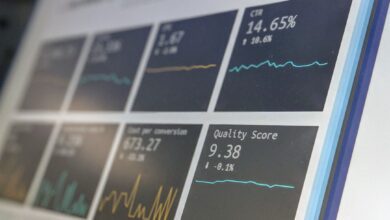Mastering Commodities Trading: Essential Strategies and Risk Management Techniques for Success

Commodities trading represents a dynamic and crucial segment of the financial markets, encompassing the buying and selling of raw materials such as gold, silver, oil, and agricultural products. As the global economy evolves, understanding the intricacies of commodities trading has become essential for investors seeking diversification beyond traditional stock trading or forex trading. This article delves into the fundamentals of commodities trading, offering insights into market dynamics that influence prices and trading opportunities.
In the sections that follow, we will explore key trading strategies, from futures trading to day trading techniques, equipping traders with the knowledge to navigate this complex landscape. Moreover, effective risk management is paramount in commodities trading, and we will discuss essential tools and techniques that help safeguard investments against market volatility. Whether you're interested in high-frequency trading, algorithmic trading, or social trading, understanding these core principles will empower you to make informed decisions in your trading journey. Join us as we uncover the potential of commodities trading and how it can complement your overall trading strategies.
- 1. Understanding Commodities Trading: The Basics of Raw Materials and Market Dynamics
- 2. Key Trading Strategies for Commodities: From Futures Trading to Day Trading Techniques
- 3. Risk Management in Commodities Trading: Essential Tools and Techniques for Success
1. Understanding Commodities Trading: The Basics of Raw Materials and Market Dynamics
Commodities trading involves the buying and selling of raw materials such as gold, silver, oil, and agricultural products. Understanding the basics of this trading sector is crucial for anyone looking to explore this dynamic market. Commodities can be categorized into two main types: hard commodities, which include natural resources like oil and metals, and soft commodities, which are agricultural products such as corn, coffee, and sugar.
In this market, various trading strategies come into play, including day trading, swing trading, and scalping. Each strategy has its unique approach to market analysis, whether it’s through technical analysis, which focuses on price movements and chart patterns, or fundamental analysis, which looks at economic indicators and supply-demand factors. For instance, factors such as weather conditions can significantly impact agricultural commodities, while geopolitical events often influence energy trading.
Commodities trading is often conducted through futures trading, where contracts for the delivery of a commodity at a predetermined price are bought and sold. This form of trading allows traders to speculate on price movements without actually holding the physical commodity. Additionally, options trading provides traders with the right, but not the obligation, to buy or sell a commodity at a set price, adding another layer of flexibility and risk management.
Leverage trading and margin trading are also significant components of commodities trading, enabling traders to control larger positions with a smaller amount of capital. However, this comes with increased risk, making effective risk management essential for success in this volatile market. Online trading platforms have made it easier for traders to access commodities markets, allowing for various approaches such as algorithmic trading, high-frequency trading, and copy trading.
In today’s interconnected financial landscape, commodities trading is often viewed alongside other forms such as forex trading, crypto trading, and index trading. Understanding how these markets interact can provide valuable insights and enhance trading strategies. For example, arbitrage trading takes advantage of price discrepancies across different markets, while CFD trading allows for speculation on price movements without owning the underlying asset.
Ultimately, the psychology of trading plays a critical role in commodities trading. Traders must remain disciplined and manage their emotions to navigate the highs and lows of the market effectively. With the right strategies, tools, and knowledge, traders can capitalize on the opportunities presented by the commodities market and achieve their financial goals.
2. Key Trading Strategies for Commodities: From Futures Trading to Day Trading Techniques
In the dynamic world of commodities trading, various strategies can help traders navigate the complexities of raw materials like gold, silver, oil, and agricultural products. Understanding and implementing key trading strategies is essential for maximizing profit potential while minimizing risks. Here, we discuss two prominent trading strategies: futures trading and day trading techniques.
Futures trading is a popular method in commodities trading, allowing traders to buy or sell a specific quantity of a commodity at a predetermined price at a future date. This strategy requires a solid grasp of market analysis, including both technical analysis and fundamental analysis. Traders often use futures contracts to hedge against price fluctuations, making it crucial to understand the underlying factors affecting commodity prices, such as geopolitical events, weather conditions, and supply-demand dynamics. Additionally, leverage trading can amplify profits, but it also increases risk, making effective risk management a vital component of a successful futures trading strategy.
On the other hand, day trading techniques focus on making quick trades within a single trading day. Traders employing this strategy aim to capitalize on short-term price movements, often utilizing high-frequency trading and algorithmic trading methods. Day traders typically analyze real-time data and employ technical analysis tools to identify entry and exit points. Scalping, a subset of day trading, involves making numerous small trades throughout the day to build profits over time. This fast-paced approach requires strong trading psychology and discipline, as traders must make rapid decisions without emotional influences.
Other trading strategies that complement these approaches include swing trading, which involves holding positions for several days or weeks, and options trading, which provides the flexibility to capitalize on price movements without the obligation to buy or sell the underlying asset. Furthermore, traders may explore derivatives trading or CFD trading to gain exposure to commodities without owning the physical assets.
As online trading platforms continue to evolve, traders can also engage in social trading and copy trading, learning from experienced traders while leveraging their strategies. By understanding these key trading strategies, traders can better navigate the commodities market, aligning their techniques with their risk tolerance and investment goals.
In conclusion, whether opting for futures trading or employing day trading techniques, a well-rounded approach that incorporates various trading strategies, market analysis, and risk management can significantly enhance a trader's success in the commodities trading arena.
References:
– CFTC. (2023). Futures Trading. Retrieved from https://www.cftc.gov
– Investopedia. (2023). Day Trading Strategies. Retrieved from https://www.investopedia.com
– CME Group. (2023). Understanding Commodity Futures. Retrieved from https://www.cmegroup.com
3. Risk Management in Commodities Trading: Essential Tools and Techniques for Success
Risk management is a crucial aspect of commodities trading that can significantly influence a trader's success. Given the inherent volatility of raw materials like gold, silver, oil, and agricultural products, implementing effective risk management strategies is essential. Here are several essential tools and techniques that traders can use to safeguard their investments and enhance their trading strategies.
1. **Diversification:** One of the simplest yet effective methods of risk management is diversification. By spreading investments across various commodities, traders can mitigate the impact of price fluctuations in any single commodity. This approach is similar to stock trading and can be applied across different trading types, including forex trading and options trading.
2. **Stop-Loss Orders:** Setting stop-loss orders is a fundamental technique in risk management. These orders automatically sell a commodity when it reaches a predetermined price, helping traders limit potential losses. This practice is particularly important in high-frequency trading and day trading, where rapid market movements can lead to significant losses if not monitored closely.
3. **Position Sizing:** Understanding how much capital to allocate to each trade is vital. Position sizing techniques help traders determine the appropriate number of contracts or shares to trade based on their risk tolerance and the volatility of the commodity. This method is crucial in leverage trading and margin trading, where the potential for loss is magnified.
4. **Technical and Fundamental Analysis:** Employing both technical analysis and fundamental analysis can significantly enhance a trader’s ability to make informed decisions. Technical analysis involves examining price charts and patterns, while fundamental analysis focuses on market conditions and economic indicators affecting commodity prices. Together, these analyses provide a comprehensive view of the market, aiding in the development of effective trading strategies.
5. **Trading Psychology:** Understanding trading psychology is essential for effective risk management. Traders must remain disciplined and avoid emotional decision-making, which can lead to impulsive trades and increased risk. Techniques such as mindfulness and stress management can help maintain a clear focus, particularly during volatile market conditions.
6. **Utilizing Online Trading Platforms:** Many online trading platforms offer tools and features tailored for risk management, such as real-time market analysis, alerts for price movements, and risk assessment calculators. Traders can leverage these resources to make more informed decisions in commodities trading, as well as in derivatives trading, CFD trading, and index trading.
7. **Regular Review and Adjustment:** Risk management is not a one-time process. Regularly reviewing and adjusting trading strategies based on market conditions and personal performance is essential. This ongoing evaluation helps traders identify successful strategies and areas for improvement, ensuring they stay ahead in the dynamic world of commodities trading.
In conclusion, effective risk management in commodities trading requires a combination of strategies, tools, and psychological discipline. By implementing these techniques, traders can enhance their chances of success in this competitive market while minimizing potential losses.
In conclusion, commodities trading offers a dynamic and multifaceted approach to investing in raw materials like gold, silver, oil, and agricultural products. Understanding the basics of this market is crucial for both novice and experienced traders as it sets the foundation for effective trading strategies. Whether you are exploring futures trading, day trading, or swing trading, the right approach can significantly enhance your potential for success.
Moreover, implementing robust risk management techniques is essential in navigating the volatile landscape of commodities. Utilizing tools such as technical and fundamental analysis, alongside an awareness of trading psychology, will empower traders to make informed decisions. As you delve into this exciting realm, consider leveraging online trading platforms that cater to various styles, from high-frequency trading to algorithmic trading.
Ultimately, the key to thriving in commodities trading lies in continuous learning and adapting your trading strategies to market conditions. By staying informed and employing sound risk management practices, you can position yourself to capitalize on opportunities in this vibrant market. Whether through copy trading, social trading, or engaging in derivatives trading, there are countless pathways to explore in the world of commodities. Embrace the journey, refine your skills, and watch as your trading endeavors bear fruit in the ever-evolving marketplace.





